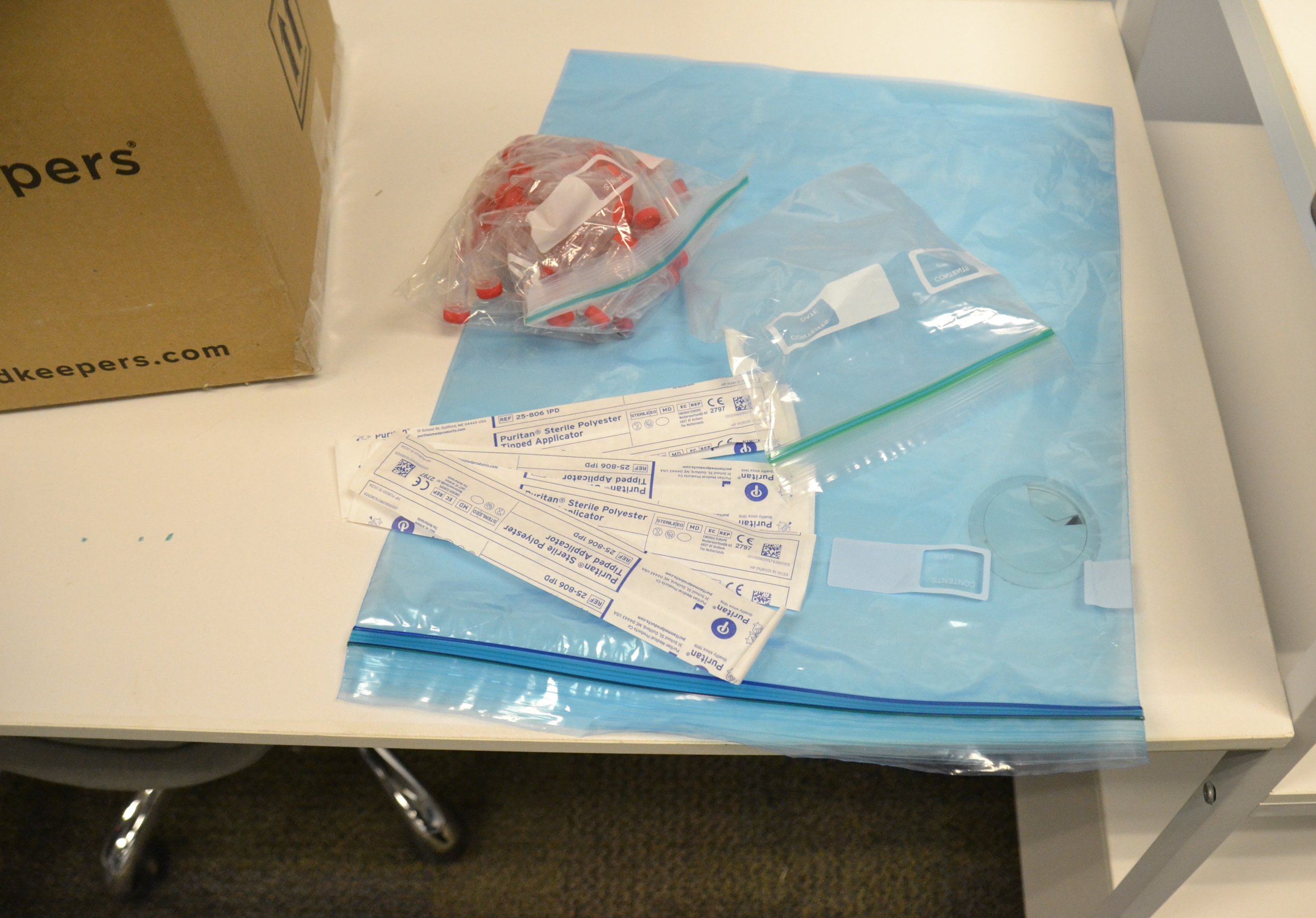Lake Superior Zoo Joins International Effort to Detect Fatal Funguses
This article was originally published in the April print edition of The Bark, distributed at the University of Minnesota Duluth campus.
Higgins holding a test tube. This is what data collection will look like once amphibians begin to emerge. Photo by Heidi Beal
This spring, the Lake Superior Zoo will begin testing local amphibians for two fatal funguses: Batrachochytrium salamandrivorans (Bsal) and Batrachochytrium dendrobatidis (BD). The zoo is partnering with the Student Network for Amphibian Pathogen Surveillance (SNAPS) to work with local students and test if either fungus is found in the Duluth community.
SNAPS is a student-powered effort to stop the spread of BD and Bsal through early detection and hands-on learning. They partner with several institutions throughout North America, Lake Superior Zoo being a new addition this year. Their goal is to save North American amphibians from these fatal funguses through student research.
“They're both funguses and they both cause mass die offs and it's really detrimental to the amphibians in those spaces,” said Hannah Higgins, a full time educator who heads the study at Lake Superior Zoo. “That's part of the reason I see it as so important, we're able to see if those are being detected in those spaces.”
Bsal and BD cause a highly fatal skin disease: Chytridiomycosis. It is the most infectious disease to amphibians. It impacts the amphibian's skin layer, resulting in wounds, excessive shedding and blistering.
Chytridiomycosis has a 100% mortality rate in most amphibian populations. The disease results in a mass mortality for amphibians living in the same ecosystem. It has caused the decline or complete extinction of over 200 amphibian species to date.
Higgins suggests that if locals find an unusual mass die-off in amphibians to contact the Minnesota Department of Natural Resources.
“They're [SNAPS] looking for both BD and Bsal, which are both very similar,” said Higgins. “BD is found almost on every continent where amphibians are found, but Bsal is only in Europe and Asia. So, they're really hoping that Bsal doesn't make its way this way.”
Higgins is leading the program at the zoo and plans to incorporate local students in her research. Their goal by the end of summer is to have 30 samples from 30 different species.
The zoo has a preschool program and summer camps, for all ages to engage in the data collection. Testing starts when amphibians emerge this spring.
“We have a nature trail in the back area that's along a nice creek,” Higgins said. “So a lot of the time, the preschoolers when they're out and about, they tend to find a lot of different frogs, toads, different types of herps.”
To collect samples, students will learn how to hand trap and dip net amphibians. Afterwards, they will swab the amphibian’s back and belly. Once the samples are collected, the amphibians get released.
For each sample, researchers fill out a survey documenting the sample’s coordinates, vegetation, season, permit and more.
The testing kit that Higgins and students will be using. Swabs, tubes and bags are in the kit. Photo by Madi Richgels
The zoo will store samples in their laboratory freezer before they get express shipping in a temperature controlled box. Higgins emphasizes the importance of equipment and temperature during this process.
“Normal freezers, those ones tend to go through the thaw freeze cycles. So they won't be completely cold enough to like keep what you've tested on there to stay on that swab,” Higgins said. “And not go through that where it could keep growing and it could change.”
Data collection will start as soon as amphibians start emerging. The zoo will collect as many samples as they can until August. Higgins states she is unsure what the next steps are if either is found here.
BD and Bsal can be fatal to amphibians and the ecosystem they inhabit. It’s not only a threat for amphibians, but also for biodiversity. Lake Superior Zoo and others in SNAPS’s international effort hope to stop the spread through early detection.


